You know what’s crazy? Five years ago, my neighborhood had exactly one Indian restaurant tucked between a dry cleaner and a pizza joint. Today, I can walk three blocks and experience authentic regional cuisines from Kerala to Kashmir, each restaurant telling its own story through aromatic spices and generations-old recipes.
Turns out this isn’t just happening in my neighborhood – according to recent research by The Food Institute, Indian establishments are now the third-most common restaurant type in the most-visited cities around the world (8%), trailing only Chinese and Italian restaurants. This transformation reflects something deeper than dining trends – it represents the power of indian food stories to connect cultures and communities across continents.

You’re about to discover narratives that capture the soul of Indian cuisine – from ancient temple kitchens feeding thousands daily to cutting-edge food scientists perfecting fermentation techniques. Whether you’re a home cook seeking authentic flavors or a food enthusiast hungry for cultural understanding, these stories will reshape how you think about Indian food.
Much like the game-changing food stories that have shaped global cuisine, these Indian narratives demonstrate how culinary traditions can transform both kitchens and communities worldwide.
Table of Contents
-
Heritage & Tradition Stories
-
Modern Innovation Stories
-
Regional Discovery Stories
-
Community & Social Impact Stories
-
Health & Wellness Stories
-
How to Evaluate Indian Food Stories
-
Final Thoughts
TL;DR
-
Heritage stories preserve centuries-old cooking techniques through families passing down their secrets
-
Modern innovation stories blend traditional flavors with contemporary tech and dietary needs
-
Regional discovery stories showcase India’s incredible culinary diversity beyond your typical restaurant menu
-
Community impact stories show how food builds connections and drives real social change
-
Health-focused stories reveal how traditional Indian ingredients support modern wellness goals
-
I rate each story across five criteria: cultural authenticity, narrative quality, educational value, contemporary relevance, and accessibility
-
The best stories combine deep cultural roots with practical modern applications you can actually use
Heritage & Tradition Stories
I’ve met some incredible people who are basically living libraries of cooking knowledge. These folks learned from their grandmothers, who learned from their grandmothers, and they’re the last ones keeping these amazing techniques alive. Here are five stories that preserve the essence of Indian culinary heritage.
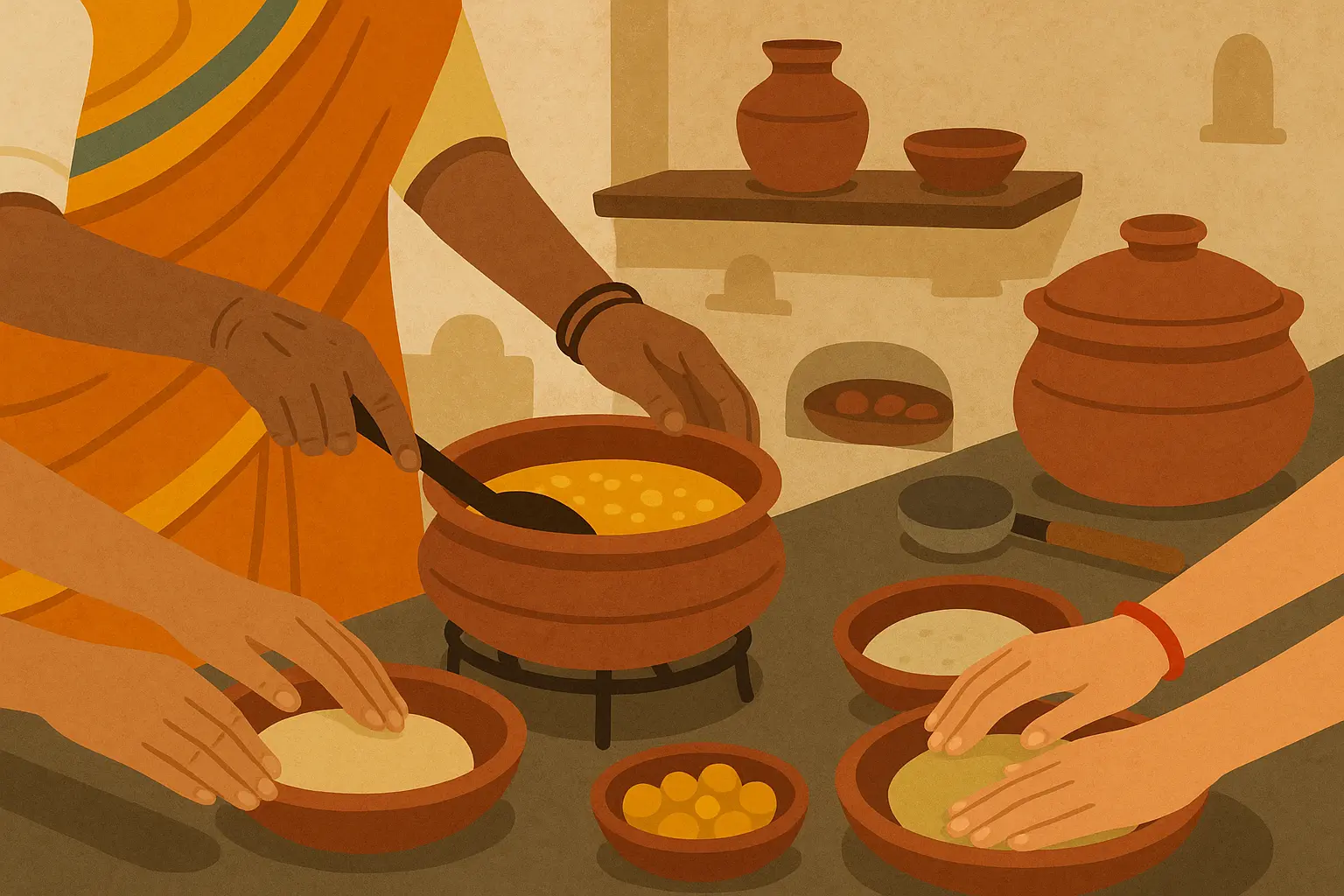
1. The Last Keeper of Awadhi Dum Cooking
The smell hit me before I even walked into Ustad Habib Rahman’s kitchen – that incredible mix of cardamom and saffron that makes your mouth water instantly. At 78, this guy is basically the last person on earth who learned authentic dum cooking directly from the royal kitchens of Lucknow. His granddaughter Fatima watches every move, knowing she’s witnessing culinary history that could disappear forever.
This man starts cooking at 4 AM – can you imagine? He’s got this whole ritual down to a science. First the rice gets a little bath (exactly 30 minutes, not 29, not 31), then it’s partially cooked but not too much, and then comes the magic. The marinated mutton gets layered with the rice, topped with fried onions, mint, and saffron-soaked milk. The pot gets sealed with wheat dough like some kind of edible time capsule and cooked on high heat for 2 minutes, then moved to low heat for 45 minutes. The result? Perfect steam-cooked biryani where each grain stays separate but somehow absorbs all those incredible flavors.
Watching his weathered hands work, I realized this kind of intergenerational knowledge transfer is exactly like the powerful anecdote examples found in traditional cooking narratives – each recipe carries decades of family wisdom and cultural memory that you just can’t get from YouTube.
2. Grandmother’s Pickle Chronicles: Five Generations of Achar Making
Meera Krishnan unfolds her great-great-grandmother’s handwritten recipe book, and honestly, it looks like it’s been through a war. The pages are yellowed with age and stained with turmeric – you can practically smell the history. This Tamil family’s 150-year-old pickle-making tradition lives within these pages, written in three different scripts because, well, literacy evolved through generations.
Here’s what blew my mind: each season brings its own pickle ritual. Summer means raw mango achaar with mustard oil and fenugreek. Monsoon calls for lime pickle that can literally last two years when prepared correctly (though good luck making it last that long without eating it). Winter introduces this rare jackfruit seed pickle that most people have never even heard of, let alone tasted.
Meera’s kitchen transforms into what I can only describe as a fermentation laboratory where beneficial bacteria work their magic over weeks and months. It’s like watching science happen in real time, except it tastes amazing.
3. The Forgotten Feast: Recreating a 16th Century Rajasthani Thali
Dr. Pushpesh Pant discovered something incredible buried in Jaipur’s City Palace archives – a detailed menu from a royal wedding feast in 1587. Food historians and chefs spent two years trying to recreate dishes whose names had been lost to time. We’re talking about Laal Maas prepared with dried red chilies that literally don’t exist anymore. Ghewar made with techniques that required relearning skills nobody alive remembered.
The archaeological discovery revealed cooking methods that modern chefs had to reverse-engineer like some kind of culinary detective work. Clay ovens built to specific dimensions that nobody makes anymore. Spice combinations that took months to perfect through trial and error. The resulting feast offered a taste of culinary history that maybe a handful of people alive had ever experienced.
Trust me, trying to recreate 500-year-old recipes is harder than it sounds. Half the ingredients don’t exist, the other half have different names, and don’t even get me started on figuring out what “cook until the moon rises” actually means in modern terms.
|
Traditional Heritage Cooking Methods |
Modern Adaptations |
Skill Level Required |
|---|---|---|
|
Clay pot dum cooking |
Heavy-bottomed pot with tight lid |
Advanced |
|
Wood-fired tandoor |
Oven with pizza stone at 500°F |
Intermediate |
|
Sun-drying spices |
Dehydrator or low oven setting |
Beginner |
|
Stone grinding |
High-powered blender or spice grinder |
Beginner |
|
Fermentation in banana leaves |
Glass containers with cloth covers |
Intermediate |
4. Sacred Kitchen: The Untold Story of Temple Food in Varanasi
The Kashi Vishwanath Temple’s kitchen never stops. Like, literally never. It operates 24 hours a day, feeding thousands of devotees with prasadam prepared using unchanged centuries-old methods. Head cook Pandit Ramesh Sharma arrives at 3 AM (these people don’t mess around with their schedules) to begin preparations that will serve 15,000 people before sunset.
Everything happens on a scale that would make your head spin. Rice cooked in vessels that hold 200 kilograms – that’s like cooking for your entire neighborhood every single day. Dal prepared in quantities that would feed a small town. Yet somehow, each dish maintains the precise balance of spices and textures that devotees expect. The kitchen operates with military precision, coordinating dozens of cooks who work in synchronized harmony that would make a Swiss watch jealous.
What gets me is the consistency. Imagine cooking the same dal recipe for 15,000 people and having it taste exactly the same every single day for centuries. These guys have figured out something that most restaurants can’t manage for a dozen customers.
5. The Spice Route Legacy: A Kerala Merchant Family’s 400-Year Journey
Walking into the Menon family’s spice warehouses in Kochi is like stepping into a time machine that smells incredible. The air is thick with cardamom, pepper, and cinnamon – the same aromas that attracted Portuguese traders four centuries ago. Ravi Menon represents the 16th generation of spice merchants, and you can taste this deep connection to the spice trade in every family recipe.
Their cardamom chicken curry uses techniques developed back when the family actually controlled cardamom plantations in the Western Ghats. The pepper-crusted fish recipe emerged from Portuguese colonial influences – it’s like eating history that happens to be delicious. Each dish tells the story of global trade routes, colonial history, and family adaptation across centuries of change.
Here’s what’s amazing: this family has been adapting to global changes for 400 years. They survived Portuguese colonization, British rule, independence, and now they’re dealing with online spice markets. Yet the core recipes remain essentially unchanged because, honestly, why mess with perfection?
Modern Innovation Stories
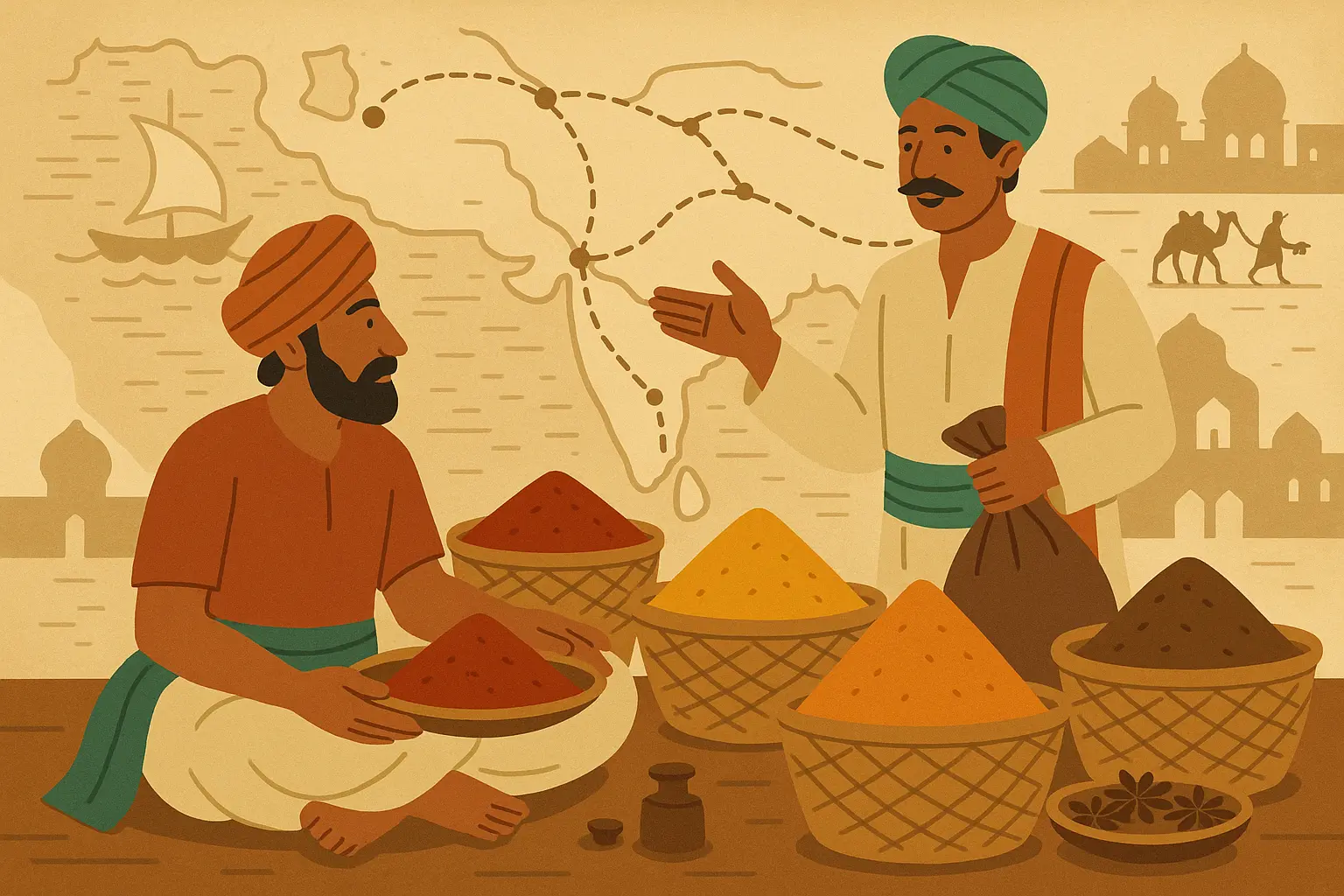
Now here’s where things get really interesting – what happens when you mix ancient cooking wisdom with modern tech? Spoiler alert: some pretty amazing stuff. These five stories show how contemporary technology and scientific understanding can enhance traditional Indian cooking methods without losing their soul.
6. Lab to Table: The Science Behind Perfect Dosa Fermentation
Dr. Priya Venkatesh’s laboratory at IIT Madras looks more like a high-tech brewery than a traditional kitchen, and honestly, that’s exactly the point. She’s spent three years decoding the microbiology of dosa batter fermentation, creating foolproof methods for consistent results no matter what climate you’re dealing with.
Here’s something cool – her team discovered that maintaining batter temperature between 86-95°F with 60-70% humidity creates the perfect conditions for those good bacteria to do their thing. They developed a simple home setup using a yogurt maker or oven with the light on that achieves consistent 8-12 hour fermentation whether you’re in humid Mumbai or dry Denver. Their testing revealed the perfect dosa batter hits a pH of 4.2-4.5 – yeah, you can actually test your batter with those little pH strips from high school chemistry.
The breakthrough came when they identified the specific bacterial strains responsible for that characteristic sour flavor we all love. Now home cooks can achieve restaurant-quality dosas by following precise temperature and timing protocols that eliminate all the guesswork from traditional fermentation. No more praying to the fermentation gods and hoping for the best.
7. Plant-Based Paneer Revolution: The Startup Changing Indian Vegetarian Cooking
Arjun Mehta’s Mumbai laboratory produces something that would have seemed impossible five years ago – plant-based paneer that actually fools traditional Indian mothers. And trust me, that’s not easy to do. His startup combines cashews and pea protein using techniques borrowed from molecular gastronomy to create alternatives that even my hardcore vegetarian friends can’t tell apart from the real thing.
The breakthrough required understanding paneer’s unique protein structure on a molecular level. Traditional paneer gets its texture from casein proteins that coagulate when heated with acid. Mehta’s team figured out how to replicate this process using plant proteins that behave similarly under heat and pressure – basically, they reverse-engineered cheese.
Their plant-based paneer works perfectly in classic dishes. Palak Paneer maintains that creamy texture you expect. Paneer Tikka develops the same golden crust when grilled. The product addresses sustainability concerns while satisfying traditional taste expectations, which is honestly the holy grail of food innovation.
8. AI Spice Master: How Machine Learning Perfects Garam Masala
This Bangalore tech company called SpiceAI did something brilliant – they analyzed over 10,000 garam masala recipes from across India and created personalized spice blends based on regional preferences and individual taste profiles. Their algorithm identifies patterns in traditional recipes that even experienced cooks might miss.
Here’s what they discovered: Punjabi garam masala typically contains 40% more cinnamon than Bengali versions. South Indian blends favor curry leaves and coconut, while Rajasthani versions go heavy on dried red chilies. The system creates custom blends by analyzing your preferences and regional cooking style, then tells you exactly how much of each spice to use.
You answer questions about heat tolerance, preferred aromatics, and cooking methods, and the AI generates personalized spice ratios that you can either order online or mix at home using precise measurements. It’s like having a spice master’s decades of experience distilled into an app.
9. Zero-Waste Indian Kitchen: The Bangalore Family’s Complete Sustainability Model
The Sharma family’s kitchen produces literally zero waste, and I mean zero. Through a combination of traditional preservation methods and modern efficiency techniques, they’ve figured out how to use absolutely everything. Vegetable peels become chutneys that are actually delicious. Leftover rice transforms into fermented kanji that’s better than most probiotics. Even banana peels get turned into crispy chips that disappear faster than regular snacks.
Their composting system processes all organic waste into nutrient-rich soil for their rooftop garden. Traditional preservation methods extend food life without refrigeration – we’re talking pickles that last months and fermented vegetables that get better with time. The family saves 60% on grocery bills while eliminating food waste entirely, which is pretty incredible when you think about it.
What I love about this approach is that it’s not some trendy zero-waste movement – it’s traditional Indian wisdom applied with modern efficiency. Their grandparents never wasted anything because they couldn’t afford to, and these techniques have been perfected over generations.
10. Molecular Gastronomy Meets Mughal Cuisine: Chef Vikas Khanna’s Laboratory
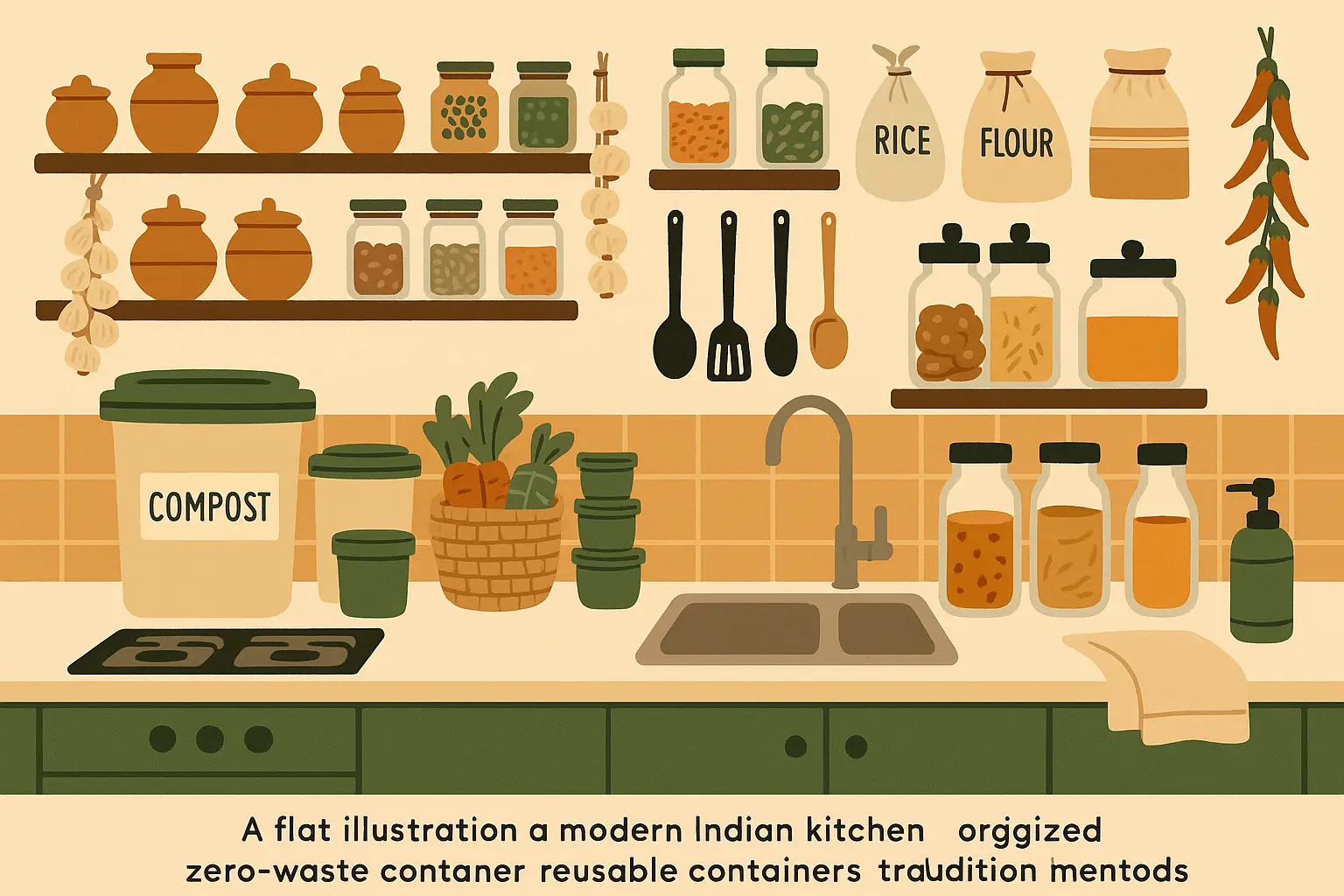
Chef Vikas Khanna’s New York laboratory applies molecular gastronomy techniques to classic Mughal dishes, and the results are mind-blowing. We’re talking spherified raita that bursts with cooling yogurt flavor in your mouth and deconstructed biryani where each component maintains its distinct identity while harmonizing perfectly.
His edible flower essences capture the aromatic complexity of traditional rose water and kewra without overwhelming delicate flavors. Liquid nitrogen creates instant kulfi with textures that are impossible through traditional freezing methods. Each innovation resp ects traditional flavor profiles while pushing presentation boundaries in ways that would make the Mughal emperors jealous.
The techniques require specialized equipment that most of us don’t have lying around, but Khanna shares simplified versions for home cooks. His spherified raita uses basic calcium chloride and sodium alginate solutions that create similar effects with standard kitchen tools – it’s like doing magic tricks with dinner.
Regional Discovery Stories
India’s regional diversity is absolutely insane when it comes to food. I’m talking about flavors and ingredients that most people have never heard of, let alone tasted. These five stories explore lesser-known cuisines from different states that showcase authentic flavors way beyond your typical Indian restaurant menu.
|
Indian Region |
Signature Ingredients |
Must-Try Dishes |
Accessibility Level |
|---|---|---|---|
|
Nagaland |
Bhut jolokia, fermented bamboo shoots, smoked meats |
Axone curry, King chili pickle |
Limited ingredients |
|
Kashmir |
Saffron, walnuts, dried fruits, lamb |
Rogan Josh, Kahwa tea |
Moderate availability |
|
Goa |
Coconut, kokum, palm vinegar, seafood |
Fish curry rice, Bebinca |
Good availability |
|
Bengal |
Mustard oil, panch phoron, river fish |
Machher jhol, Sandesh |
Good availability |
|
Punjab |
Wheat, mustard greens, milk products |
Makki di roti, Lassi |
Excellent availability |
11. Hidden Flavors of Nagaland: The Bhut Jolokia Chronicles
Mary Konyak grows the world’s hottest chili in her backyard garden in Kohima, Nagaland, and honestly, this woman is braver than I’ll ever be. The bhut jolokia, or ghost pepper, reaches over one million Scoville units – that’s hot enough to be used in military-grade pepper spray. Yet in Naga cuisine, it’s treated with the same respect as any other essential ingredient, which tells you everything about how tough these people are.
Her traditional fermented bamboo shoot curry combines bhut jolokia with axone (fermented soybeans) and smoked pork. The heat builds slowly, allowing other flavors to develop before the chili’s intensity takes over and makes you question your life choices. The dish represents Northeastern India’s unique culinary identity, influenced by Southeast Asian techniques and indigenous ingredients that most of India has never heard of.
Sourcing authentic Naga ingredients outside the region is basically impossible, but Mary shares adaptation techniques using more accessible substitutes. Thai chilies can approximate bhut jolokia heat levels (though you’ll need a lot of them), while fermented black beans substitute for axone in most recipes. Just don’t blame me when your neighbors complain about the smell.
12. Kashmir’s Wazwan: The Art of the Royal Feast
Master chef Bashir Ahmad is preparing for a traditional Kashmiri wedding, and I’m talking about a 36-course Wazwan feast that will feed 400 guests. The preparation begins three days before the ceremony, with each dish requiring specific timing and technique perfected over generations. This isn’t just cooking – it’s orchestrating a culinary symphony.
Rista (meatballs in red gravy) demands hand-pounding mutton for four hours to achieve the proper texture. Yeah, four hours of hand-pounding meat. Tabak Maaz (fried lamb ribs) requires precise temperature control to achieve that crispy exterior while maintaining tender interior. Gushtaba (meatballs in white gravy) represents the feast’s pinnacle – a dish so delicate that even slight overcooking ruins its silky texture.
The Wazwan tradition reflects Kashmir’s complex cultural history, blending Central Asian techniques with local ingredients. Each dish tells stories of royal patronage, Sufi influences, and adaptation to Kashmir’s harsh mountain climate where food had to sustain people through brutal winters.
13. Goan Beach Shacks to Michelin Stars: The Evolution of Coastal Cuisine
Goan cuisine is this fascinating evolution from Portuguese colonial influences through beach shack culture to modern fine dining interpretations. Chef Avinash Martins traces this journey through his family’s recipes, which span four generations of adaptation and innovation – basically, they’ve been figuring it out as they go along.
His great-grandmother’s Vindaloo recipe uses palm vinegar and Kashmiri chilies – ingredients that Portuguese colonists adapted from local availability because they couldn’t get what they wanted from home. The dish’s name actually derives from Portuguese “vinha d’alhos” (wine and garlic), but the final preparation became distinctly Goan through local ingredient substitutions and climate adaptations.
Modern interpretations maintain traditional flavor profiles while addressing contemporary dietary preferences. Coconut milk-based curries work perfectly for vegan adaptations. Fish curry rice remains the state’s signature dish, but chefs now experiment with sustainable seafood choices and organic coconut products because, you know, the ocean isn’t infinite.
14. Punjab’s Farm-to-Table Revolution: Organic Wheat and Heritage Grains
Farmer Gurpreet Singh did something radical five years ago – he abandoned chemical fertilizers and returned to traditional wheat varieties his grandfather grew in the 1940s. His fields now produce emmer wheat, einkorn, and other ancient grains that disappeared during the Green Revolution’s push for high-yield varieties that prioritized quantity over everything else.
These heritage grains create makki di roti with complex nutty flavors that modern wheat just can’t match. It’s like comparing a symphony to elevator music. The traditional sarson da saag pairs perfectly with these robust grain flavors, creating combinations that satisfy both nutritional needs and cultural authenticity in ways that make your soul happy.
Singh’s organic farming methods restore soil health while producing grains with higher protein content and better mineral profiles. His direct-to-consumer sales connect urban families with traditional ingredients their grandparents would actually recognize, which is pretty rare these days.
15. Bengal’s Sweet Revolution: Reimagining Mishti for Modern Palates
Kolkata’s traditional sweet makers face a real challenge: maintaining authentic flavors while addressing health-conscious consumers who avoid refined sugar like it’s poison. Master confectioner Bijoy Krishna Modak spent two years perfecting jaggery-based versions of classic sweets without compromising texture or taste, which is way harder than it sounds.
His reduced-sugar Rasgulla maintains that signature spongy texture through careful temperature control during the chhana-making process. Sandesh made with date palm jaggery develops these incredible complex caramel notes that actually enhance rather than mask traditional flavors. The innovations required precise timing and temperature adjustments that took months to perfect through trial and error.
Modern presentation techniques attract younger customers while preserving traditional preparation methods. Modak’s shop now serves health-conscious versions alongside classic recipes, allowing customers to choose based on dietary preferences without feeling like they’re missing out on tradition.
Community & Social Impact Stories
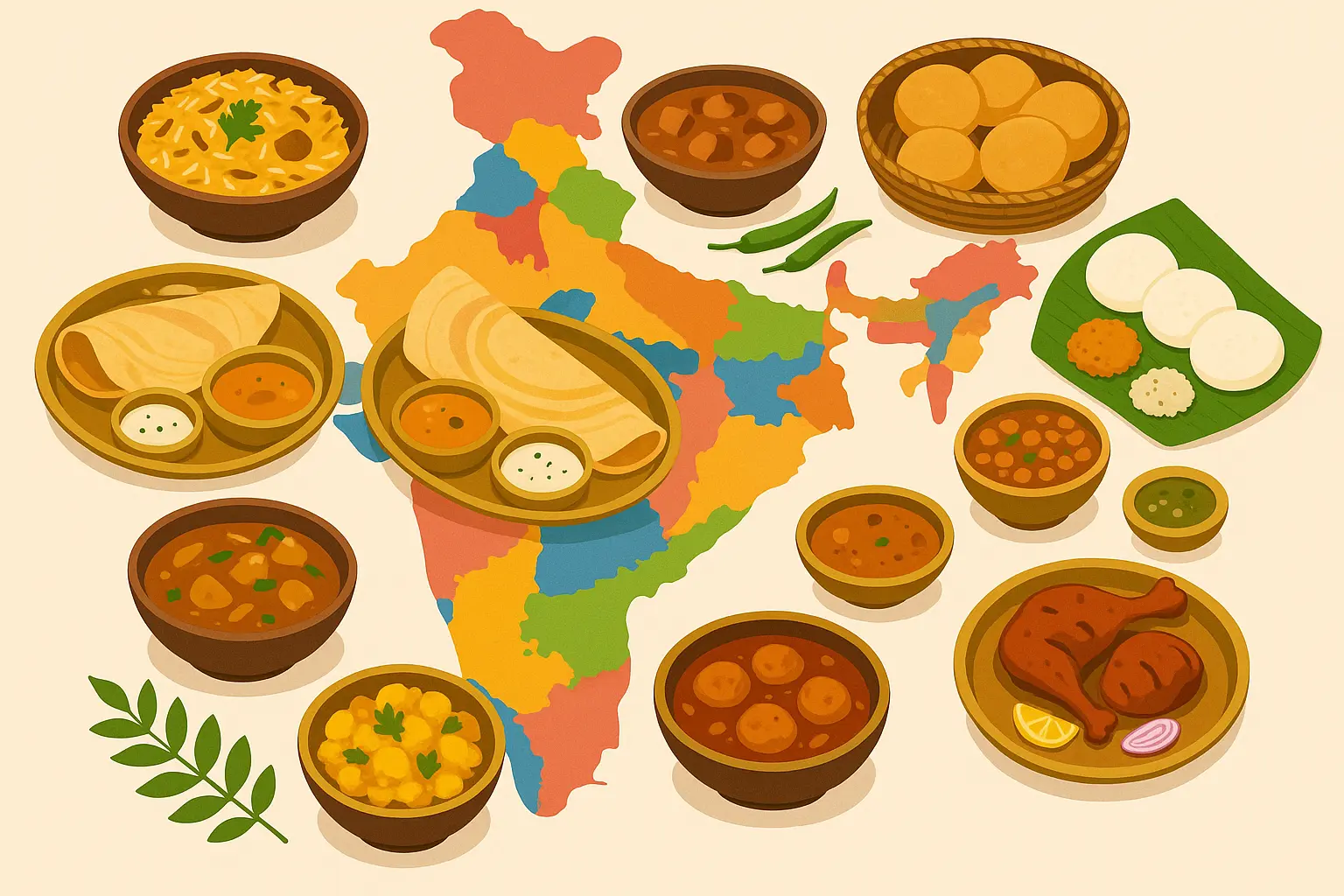
Here’s what really gets me excited – stories that show how food builds communities, drives real social change, and creates economic opportunities. From Mumbai’s legendary dabbawalas to women’s cooperatives in Rajasthan, these narratives prove that traditional cooking practices can address modern challenges while preserving cultural heritage and actually empowering people.
16. Mumbai’s Dabbawalas: The 130-Year-Old Food Delivery Revolution
Every morning at 9 AM, Raghunath Medge collects 35 tiffin boxes from suburban homes in Vile Parle. By 12:30 PM, these home-cooked meals reach office workers across Mumbai’s business district with 99.9% accuracy – a precision rate that Six Sigma companies study for operational excellence. And these guys do it with zero technology.
Each tiffin box carries this complex alphanumeric code that guides its journey like some kind of edible GPS system. For example, “E-B-2-15-7-12” indicates: E (collection area in suburbs), B (destination area in business district), 2 (building number), 15 (floor), 7 (office number), and 12 (specific desk). This system, operated by workers with minimal formal education, achieves efficiency levels that major corporations with million-dollar software can’t match.
The 5,000-strong dabbawala network adapts to modern challenges while maintaining traditional values. They’ve introduced SMS notifications for customers and digital payment options, but the core system remains unchanged because honestly, why fix what isn’t broken? Each dabbawala takes personal responsibility for their assigned routes, creating accountability that no app can replicate.
17. The Gurudwara Kitchen: Feeding 100,000 Daily Through Seva
The Golden Temple’s langar in Amritsar operates the world’s largest free kitchen, serving 100,000 people daily regardless of religion, caste, or economic status. Head cook Kulwant Singh coordinates 300 volunteers who prepare simple vegetarian meals using industrial-scale cooking techniques that would make a restaurant chain jealous.
Dal preparation begins at 2 AM in massive steel vessels that hold 1,000 liters each – that’s enough dal to fill your bathtub. Roti production runs continuously on custom-built machines that produce 200,000 flatbreads daily. The kitchen maintains consistent quality despite enormous volume through standardized recipes and systematic volunteer training that puts corporate training programs to shame.
What blows my mind is the volunteer diversity – business executives work alongside farmers, students serve alongside retirees. The langar demonstrates how food service can build community connections across social boundaries while addressing food security on a massive scale. It’s basically proof that feeding people brings out the best in humanity.
18. Street Food Safety Revolution: How Kolkata’s Vendors Went Digital
Kolkata’s street food vendors transformed their businesses through digital adoption while maintaining the traditional flavors that made them famous in the first place. Vendor association leader Amit Das coordinated training programs that taught food safety certifications, digital payments, and customer feedback systems without losing the soul of street food culture.
Puchka vendor Ravi Kumar now accepts mobile payments and maintains ingredient sourcing records that ensure food safety compliance. His traditional recipes remain completely unchanged, but modern business practices increased his daily income by 40% while reducing health department violations to basically zero.
The transformation required overcoming technology barriers and initial customer skepticism – people were worried that going digital would somehow make the food less authentic. Vendors learned to balance efficiency improvements with the personal interactions that make street food culture special. Customer feedback systems help vendors improve service while maintaining authentic preparation methods that have worked for generations.
19. The School Lunch Revolution: Transforming Mid-Day Meals Across India
Nutritionist Dr. Shanti Ghosh redesigned school lunch programs across rural Maharashtra, introducing nutrition education and local ingredient sourcing while respecting cultural food preferences. Her programs serve 50,000 students daily with meals that meet nutritional requirements and actually taste good enough that kids want to eat them.
The menus rotate seasonal vegetables and incorporate traditional recipes that children recognize from home – no weird fusion experiments that confuse kids and parents alike. Local farmers supply ingredients directly to schools, creating economic opportunities while ensuring freshness. Students learn about nutrition through hands-on cooking classes that connect health education with cultural food traditions.
Program success required extensive community engagement and teacher training because parents initially resisted menu changes. But improved student health outcomes and academic performance convinced skeptics that this wasn’t just another government program. The model now expands to other states seeking culturally appropriate nutrition programs that actually work.
20. Women’s Cooperative Kitchens: Economic Empowerment Through Traditional Cooking
The Rajasthani women’s cooperative in Jodhpur transforms traditional cooking skills into sustainable businesses that provide economic independence while preserving culinary traditions. Cooperative leader Kamala Devi coordinates 200 women who produce traditional foods for urban markets, basically turning grandmothers into entrepreneurs.
Their bajra roti, dal baati churma, and seasonal pickles reach customers in Delhi and Mumbai through online sales platforms. Traditional recipes remain completely unchanged, but modern packaging and marketing techniques expand market reach beyond local communities. Women earn 300% more than previous agricultural labor while working from their villages, which is life-changing money.
Success required overcoming transportation challenges, quality standardization, and market access barriers that would intimidate most startups. The cooperative provides training in food safety, packaging, and basic business skills while respecting traditional preparation methods. The model replicates across rural India, creating economic opportunities for women with traditional cooking skills that were previously undervalued.
Health & Wellness Stories
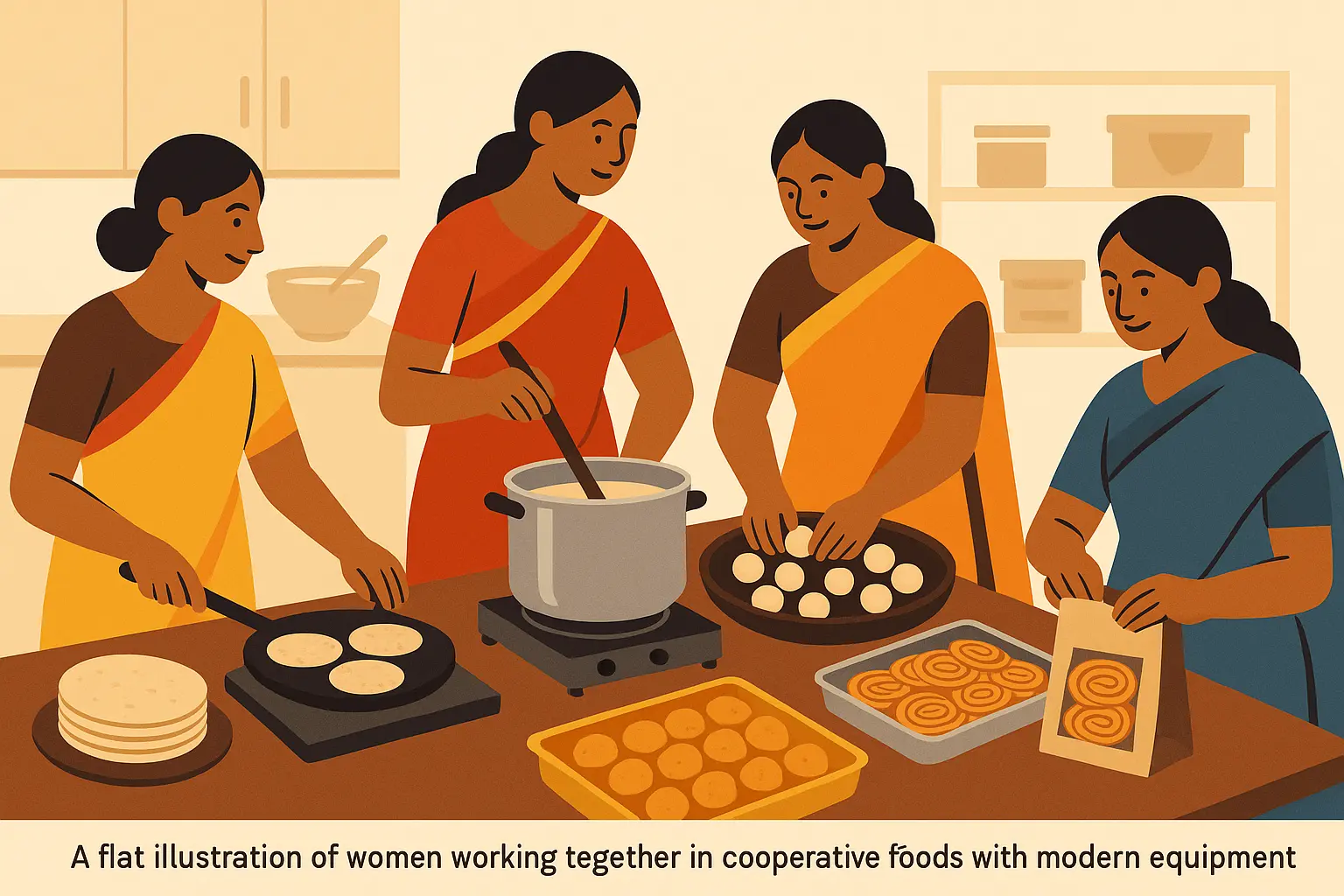
Here’s something that really excites me – discovering how traditional Indian ingredients and cooking methods support modern wellness goals. From Ayurvedic meal planning to diabetes-friendly adaptations, these stories bridge ancient nutritional wisdom with contemporary health science in ways that actually make sense for everyday cooking.
21. Ayurvedic Cooking for Modern Wellness: The Doctor-Chef Collaboration
Dr. Priya Sharma partners with Chef Ravi Kumar to create therapeutic meal plans using traditional spices for specific health conditions. Their collaboration combines medical knowledge with culinary expertise to develop recipes that taste incredible while providing targeted health benefits – basically, medicine that doesn’t suck.
Turmeric-ginger tea becomes a morning anti-inflammatory ritual that actually tastes good. Ashwagandha-infused kheer helps manage stress and improve sleep quality without the weird aftertaste you get from supplements. Holy basil (tulsi) gets incorporated into everyday dal preparations for immune system support that happens naturally through meals you’d want to eat anyway.
Their meal plans address specific doshas (body types) while accommodating modern dietary restrictions. Vata-balancing meals emphasize warm, grounding foods with healthy fats. Pitta-pacifying recipes focus on cooling ingredients and moderate spicing. Kapha-reducing menus feature light, warming spices that stimulate digestion without overwhelming your system.
22. The Diabetes-Friendly Indian Kitchen: Low-Glycemic Traditional Recipes
Nutritionist Kavita Devgan transforms classic Indian dishes using low-glycemic ingredients that help manage blood sugar levels without sacrificing authentic flavors. Her adaptations address India’s growing diabetes epidemic through traditional cuisine modifications that don’t feel like punishment food.
Cauliflower rice biryani maintains all the aromatic spices and cooking techniques of traditional biryani while reducing glycemic impact by 70%. Almond flour dosas provide protein and fiber while creating similar texture to rice-based versions. Stevia-sweetened kheer satisfies dessert cravings without blood sugar spikes that make you feel terrible later.
|
Traditional Ingredient |
Health-Conscious Substitute |
Glycemic Impact |
Taste Difference |
|---|---|---|---|
|
White rice |
Cauliflower rice or quinoa |
70% reduction |
Mild, adaptable |
|
Wheat flour |
Almond or chickpea flour |
60% reduction |
Nuttier, denser |
|
Sugar |
Stevia or monk fruit |
90% reduction |
Clean sweetness |
|
Regular potatoes |
Sweet potatoes or turnips |
40% reduction |
Slightly sweeter |
|
Refined oil |
Coconut or avocado oil |
Better fat profile |
Richer flavor |
23. Fermented Foods Revival: The Gut Health Revolution in Indian Cuisine
Microbiologist Dr. Shilpa Veth explores traditional fermented Indian foods, demonstrating their probiotic benefits and teaching modern fermentation techniques for optimal gut health. Her research reveals that traditional Indian diets naturally support healthy microbiomes through diverse fermented foods that most people take for granted.
Idli and dhokla batters contain beneficial Lactobacillus strains that improve digestive health better than most expensive probiotic supplements. Traditional kanji (fermented rice water) provides probiotics and electrolytes that support hydration and gut function. Homemade kefir using traditional starter cultures creates diverse bacterial communities that commercial probiotics can’t even come close to matching.
Her laboratory techniques help home cooks achieve consistent fermentation results without the guesswork. pH testing strips ensure proper acidity levels – when it hits the sweet spot, you know you’re getting that perfect sour-tangy flavor that makes your gut happy. Temperature monitoring creates optimal conditions for beneficial bacteria growth. Simple equipment modifications turn any kitchen into a fermentation laboratory that actually works.
24. Plant-Based Protein Powerhouse: Traditional Indian Vegetarian Nutrition
Sports nutritionist Rujuta Diwekar demonstrates how traditional Indian vegetarian cuisine provides complete protein profiles for athletes and fitness enthusiasts. Her analysis reveals that classic food combinations create amino acid profiles that rival animal proteins – your grandmother knew what she was doing all along.
Dal-chawal (lentils and rice) combinations provide all essential amino acids when consumed together. It’s not just comfort food – it’s scientifically perfect nutrition. Rajma-rice delivers complete proteins with high fiber content that supports sustained energy release. Traditional combinations developed over centuries naturally address nutritional needs that modern science validates.
Her meal plans for athletes incorporate traditional recipes with precise timing for optimal performance. Pre-workout meals emphasize easily digestible carbohydrates from traditional sources. Post-workout nutrition focuses on protein-rich dal preparations that support muscle recovery while actually tasting good.
25. Anti-Inflammatory Spice Therapy: Healing Through Indian Spices
Functional medicine doctor Dr. Akshay Talati demonstrates how common Indian spices can be used therapeutically in daily cooking to reduce inflammation and support immune function. His protocols transform everyday spice use into targeted health interventions that happen naturally through meals.
Turmeric consumption requires black pepper and healthy fats for optimal absorption – his golden milk recipe includes precise ratios that maximize curcumin bioavailability. Ginger preparations vary based on intended effects – fresh ginger for nausea, dried ginger for circulation, pickled ginger for digestion. It’s like having a pharmacy in your spice rack.
Cinnamon helps regulate blood sugar when consumed with meals – just sprinkle it on your morning oatmeal or evening tea. Fenugreek seeds support hormonal balance and digestive health. His spice therapy protocols provide specific dosages and preparation methods that maximize therapeutic benefits while maintaining culinary appeal, so you’re not choking down medicine disguised as food.
How to Evaluate Indian Food Stories
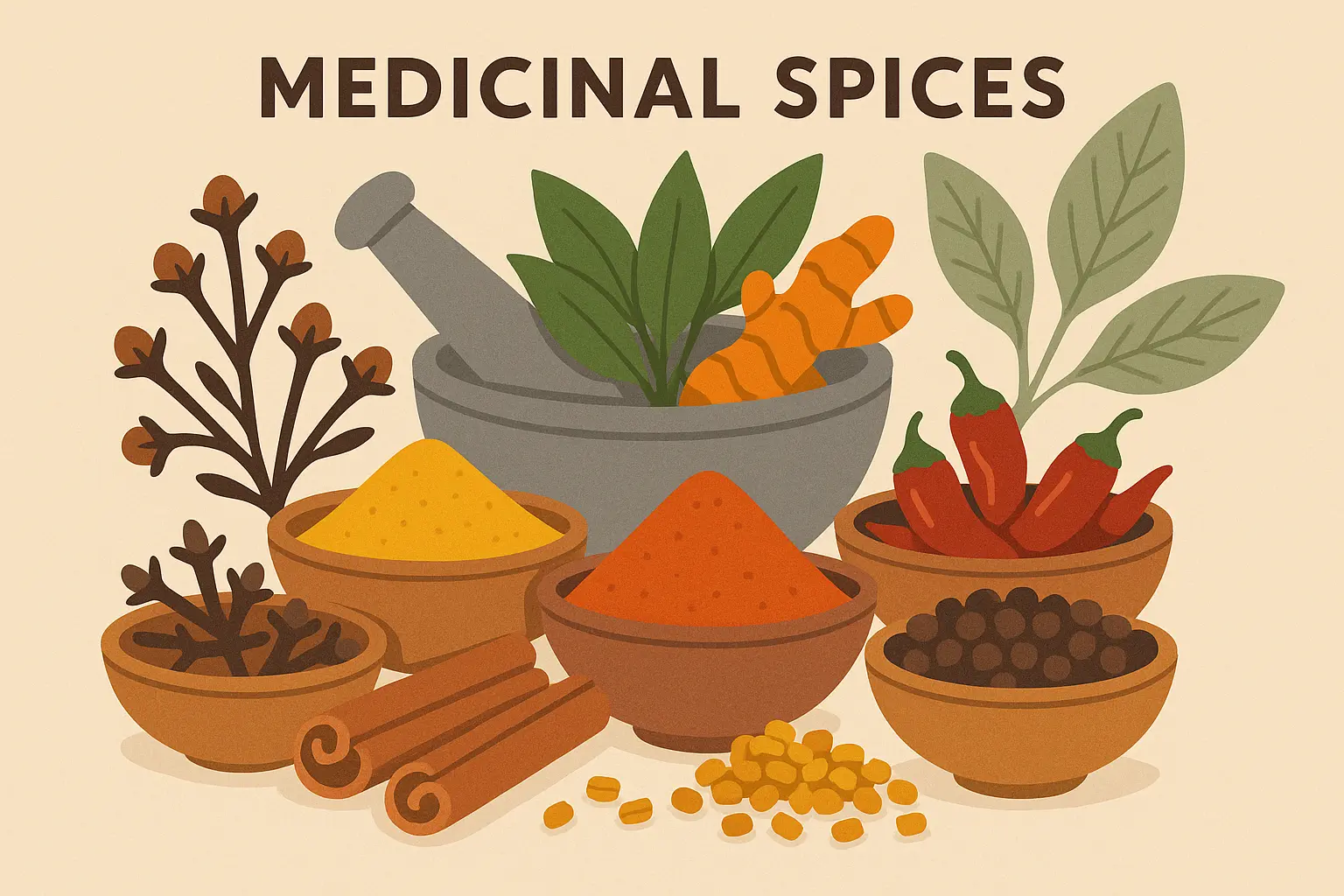
Look, I’ve read a lot of food stories over the years, and honestly? Most of them are pretty forgettable. But the ones that stick with you – the ones that actually change how you cook – they all have a few things in common. Here’s how I evaluate Indian food stories to separate the gems from the generic fluff.
Cultural Authenticity & Accuracy
Authentic Indian food stories accurately represent India’s diverse culinary landscape across different states and regions without falling into the “curry and naan” trap that most people think represents all of Indian food. They balance traditional practices with contemporary innovations while providing proper historical and social context for dishes and cooking practices.
Regional specificity matters way more than generic “Indian” descriptions. Stories that identify specific states, communities, or cooking traditions show they actually understand what they’re talking about. Accurate ingredient names, preparation methods, and cultural contexts separate authentic narratives from the superficial stuff you see everywhere.
Narrative Quality & Engagement
Compelling food stories feature clear storytelling structure with strong character development and emotional resonance that makes you actually care about the people involved. They evoke sensory experiences that transport you into kitchens, markets, and dining rooms while maintaining universal appeal that transcends cultural boundaries.
The best food narratives employ the same story theme examples that make all great storytelling memorable, weaving universal themes of family, tradition, and transformation through specific culinary experiences that feel real and relatable.
Personal connections drive engagement more than technical descriptions. Stories featuring real people facing genuine challenges create emotional investment that recipe collections just can’t match.
Educational Value
Valuable Indian food stories provide practical cooking methods and ingredient knowledge while offering historical significance and cultural context that actually teaches you something new. They include nutritional awareness and health benefits, ensuring readers gain both practical skills and deeper understanding of culinary traditions.
Technical accuracy in cooking instructions separates helpful guides from misleading information that wastes your time and ingredients. Stories should include realistic preparation times, skill level requirements, and ingredient sourcing guidance that helps you successfully implement techniques without setting yourself up for failure.
Contemporary Relevance
Modern Indian food stories align with current trends including sustainability, health consciousness, and fusion cuisine without losing their cultural soul. They address social impact through food security, community building, or cultural preservation while incorporating innovation factors and technological integration in traditional cooking methods.
Relevance doesn’t require abandoning tradition – that’s actually the opposite of what works. The most successful stories demonstrate how traditional practices address contemporary concerns: sustainability through traditional preservation methods, health through ancient spice wisdom, community building through shared cooking traditions.
Accessibility & Practicality
Accessible stories consider realistic ingredient sourcing for global audiences with clear skill level indications and realistic preparation times that don’t require you to quit your day job. They provide practical guidance that allows readers to implement techniques and recipes regardless of their location or experience level.
Ingredient substitutions and equipment adaptations make traditional techniques achievable in modern kitchens without specialized equipment that costs more than your rent. Stories should acknowledge limitations while providing workable alternatives that maintain authentic flavors and cultural significance.
How Nairrate Enhances Your Food Storytelling Journey

You know that feeling when you want to write about food but just can’t find the right words? Yeah, we’ve all been there. That’s actually why tools like Nairrate can be pretty helpful – sometimes you just need a little nudge to get the creative juices flowing.
Crafting compelling Indian food stories requires the same precision and creativity that goes into layering complex flavors in traditional dishes. You need cultural context, sensory details, and emotional connections to create memorable narratives that actually resonate with readers instead of just filling space on a page.
Nairrate’s Story Starters Generator helps you overcome that intimidating blank page by providing culturally-sensitive opening lines that capture the essence of Indian culinary traditions. Whether you’re writing about a grandmother’s secret spice blend or a modern chef’s innovative techniques, the right opening line sets the tone for your entire narrative and makes the difference between engaging readers and losing them in the first paragraph.
Food bloggers and content creators can use Nairrate’s AI-powered tools to generate multiple story angles for a single dish. This helps you explore different narrative approaches – from historical significance to modern health benefits or cultural importance in family traditions – without getting stuck in the same old recipe format that everyone else uses.
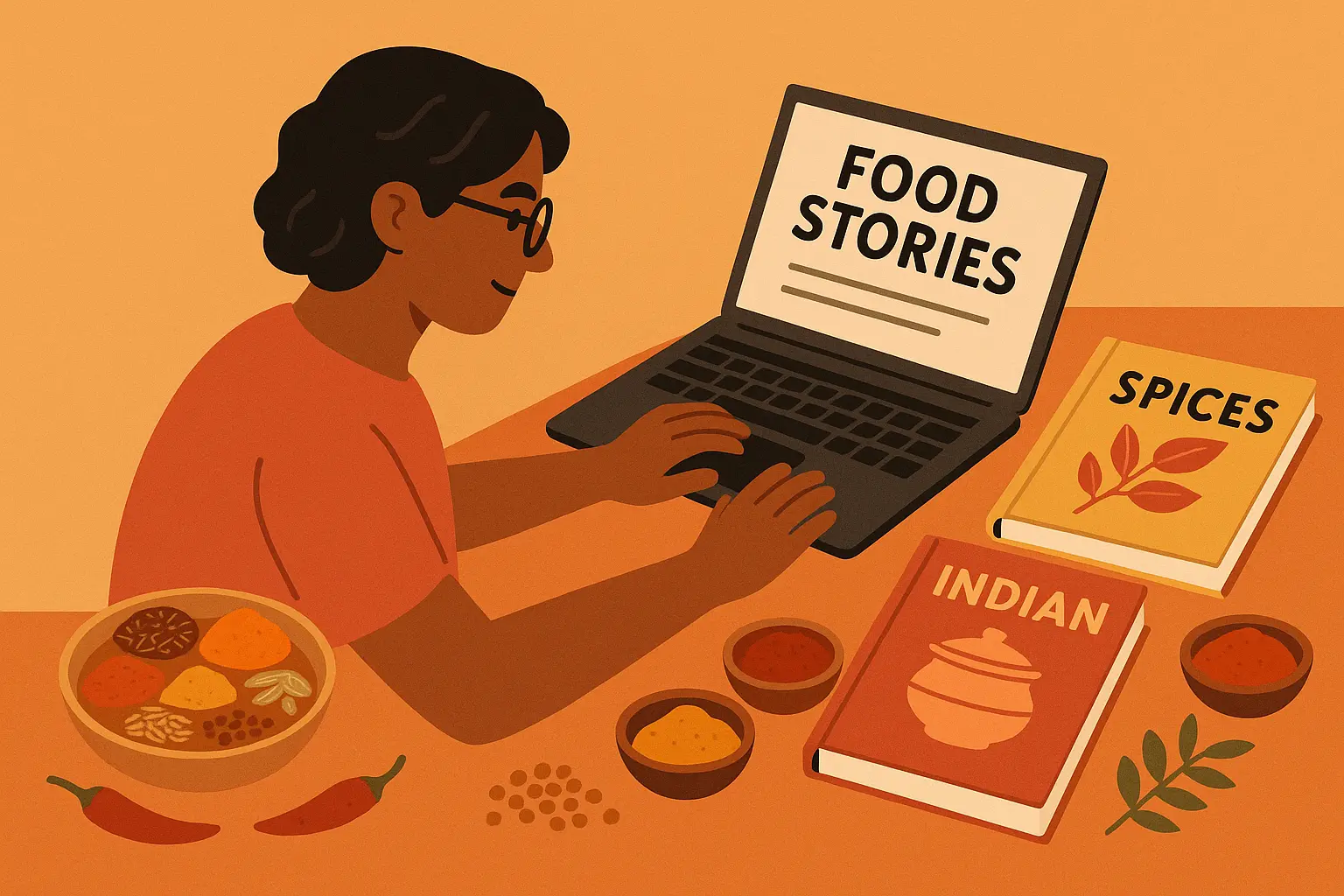
Ready to transform your food storytelling? Try Nairrate’s story generation tools and discover how technology can help you craft narratives that honor cultural heritage while engaging today’s diverse audiences.
Final Thoughts
These 25 Indian food stories represent way more than just recipes or cooking techniques – they’re windows into a culture that has shaped global cuisine for centuries. Each narrative offers unique insights into how food connects communities, preserves traditions, and adapts to modern needs while maintaining its authentic essence and cultural soul.
The best stories in this collection successfully balance deep cultural roots with practical modern applications that you can actually use in your own kitchen. Stories about Mumbai’s dabbawalas and the zero-waste kitchen model demonstrate how traditional wisdom can address contemporary challenges better than most modern solutions. Meanwhile, heritage stories preserve irreplaceable knowledge that might otherwise disappear with aging practitioners who represent the last links to culinary history.
Your journey with these stories doesn’t end with reading them – that’s actually where it begins. Consider which narratives resonate most with your cooking interests and cultural curiosity. Whether you’re drawn to the scientific precision of fermentation or the community impact of cooperative kitchens, each story offers actionable insights you can apply in your own kitchen and community.
Here’s the thing – every time you try one of these recipes or techniques, you’re becoming part of these stories. Maybe you’ll mess up the spice ratios (I definitely have), or maybe you’ll discover your own little twist that makes a dish uniquely yours. Either way, you’re keeping these incredible food traditions alive, one meal at a time. The evolution of Indian cuisine continues through people like you who bridge ancient traditions with modern innovations, proving that the most compelling food stories aren’t just about ingredients and techniques – they’re about the people, communities, and cultures that give food its deeper meaning and lasting impact.



Add comment